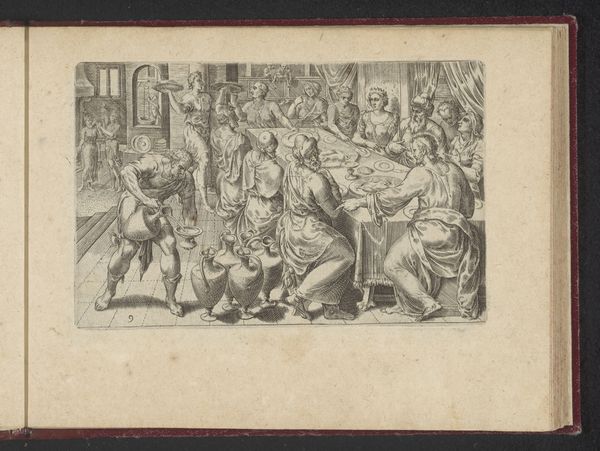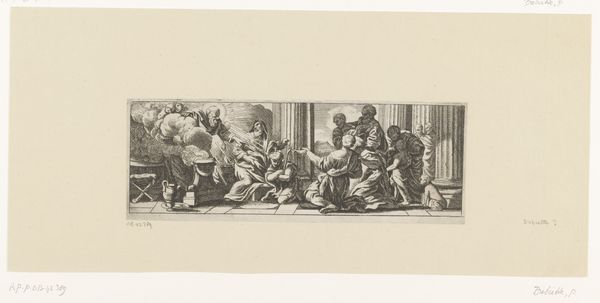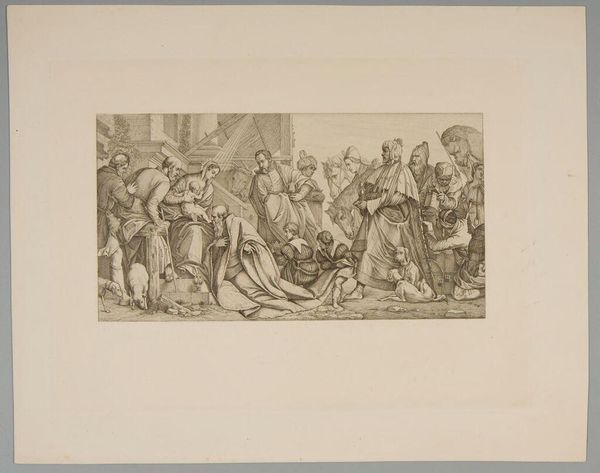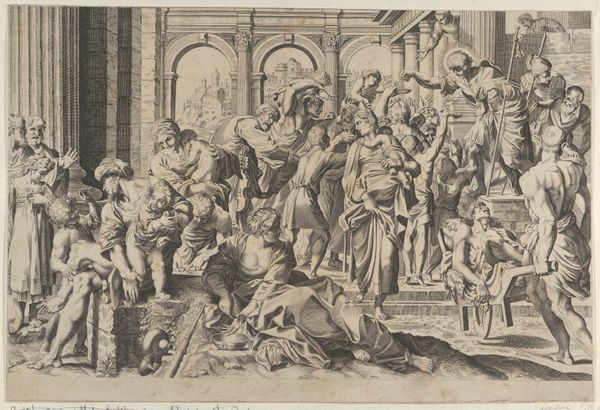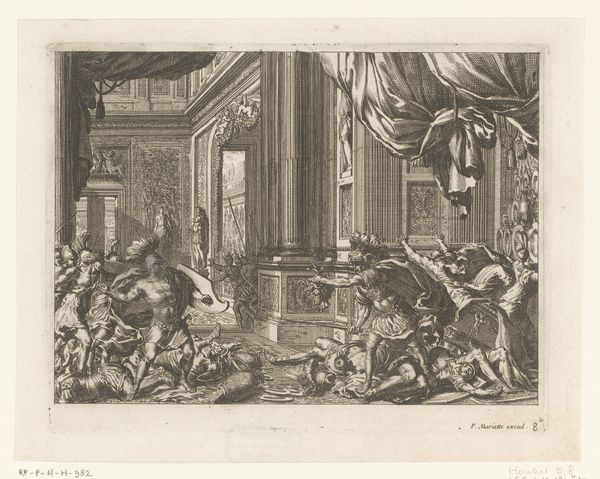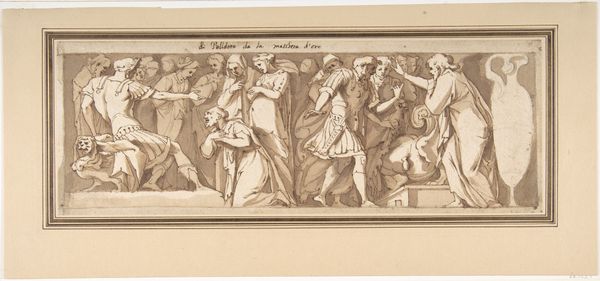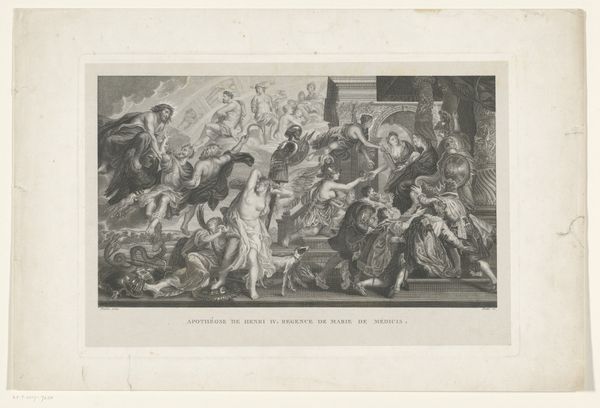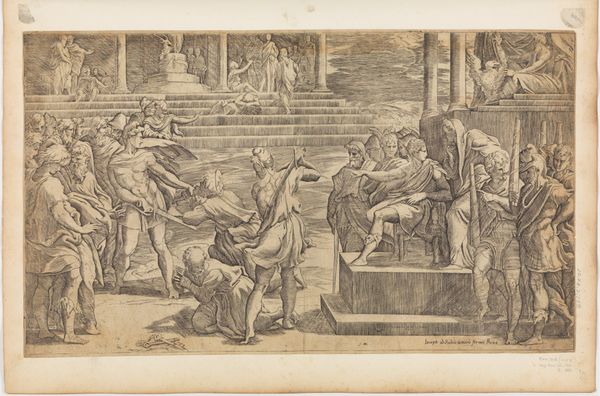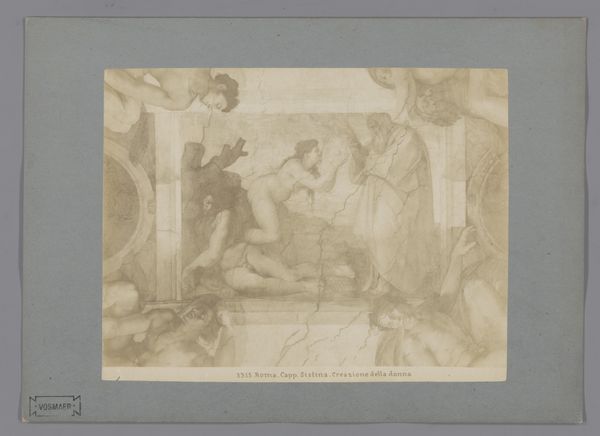
drawing, print, engraving
#
drawing
#
narrative-art
# print
#
figuration
#
history-painting
#
italian-renaissance
#
engraving
Dimensions: height 239 mm, width 373 mm
Copyright: Rijks Museum: Open Domain
Editor: So, this is "Death of Ananias" by Ugo da Carpi, created sometime between 1518 and 1532. It's a print, an engraving, that vividly illustrates a rather dramatic scene. What strikes me is the stark contrast between the figures in motion and the static, almost theatrical, backdrop. How would you interpret this work, particularly from a material perspective? Curator: The key lies in understanding printmaking not just as reproduction, but as a *process*. Ugo da Carpi didn't just create an image; he engaged in a craft. Consider the woodblock: its preparation, the labor involved in carving it, and the knowledge required to achieve this tonal range with line and texture. We see how materiality shapes meaning. How do you think the act of creating a print affects its accessibility and reception compared to, say, a painting of the same subject? Editor: That's fascinating. A painting might be seen as a unique, singular object, but a print implies reproducibility, wider distribution, and, arguably, broader social impact. Curator: Precisely. The 'death' becomes a commodity, available for consumption, for reflection and debate within a larger community, it makes you think about accessibility to religious narratives through a new form of technology at that time. Think of the relationship between the printing process, the religious Reformation of the time, and its impact on wealth. Editor: It’s amazing how focusing on the material production opens up entirely new avenues for understanding the artwork's place in its cultural moment. I guess I hadn’t considered that aspect so much. Curator: Absolutely! The choice of printmaking highlights how artistry is deeply intertwined with social structures, technologies, and economic forces. Looking closely reveals more than just the image; it reveals the history of its making and consumption.
Comments
No comments
Be the first to comment and join the conversation on the ultimate creative platform.

